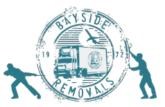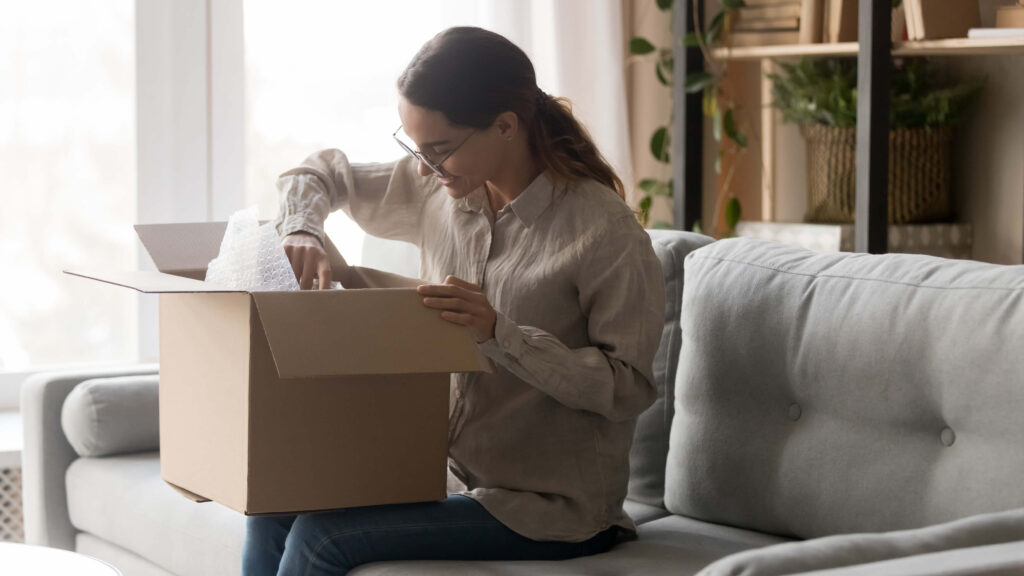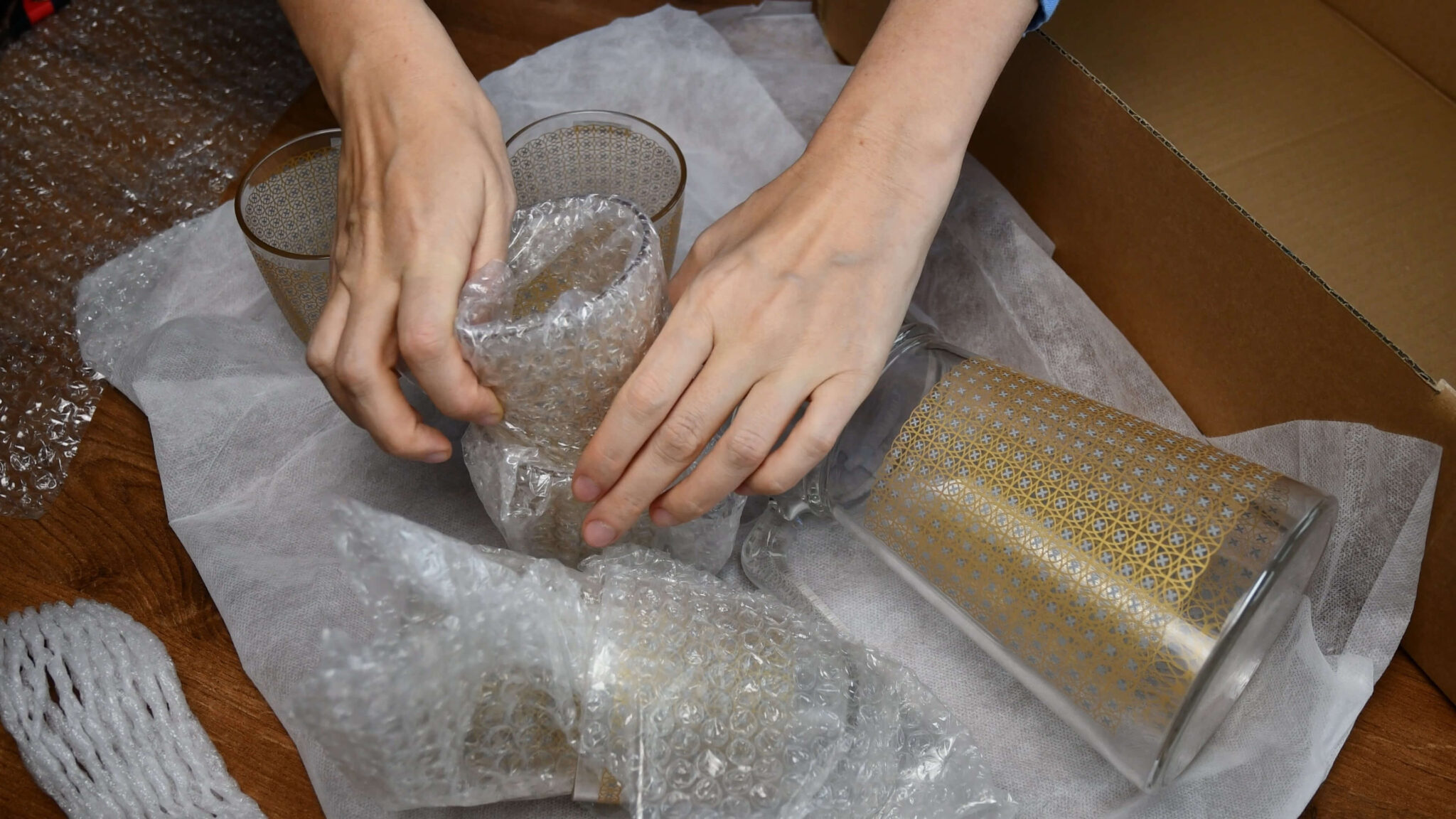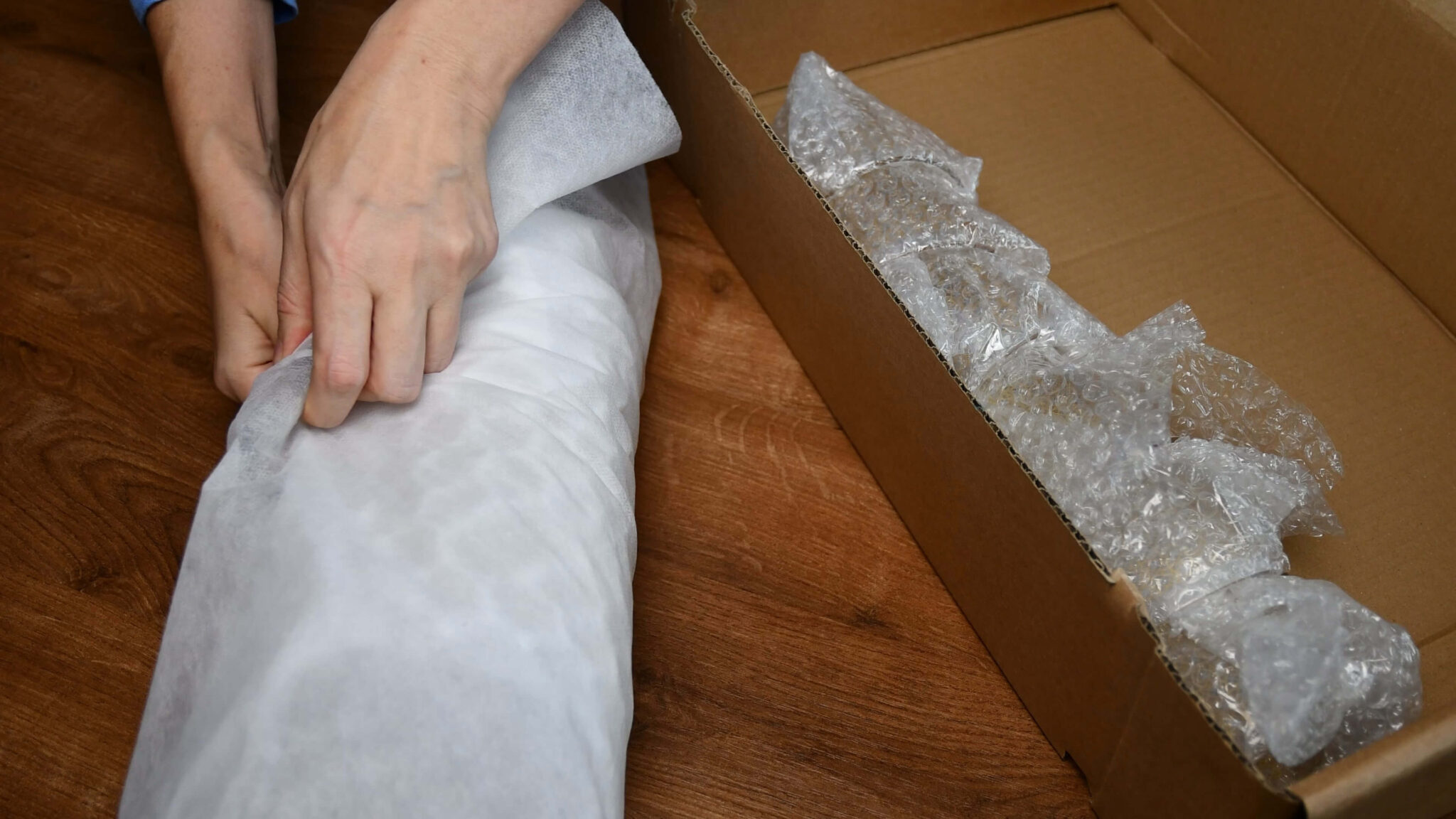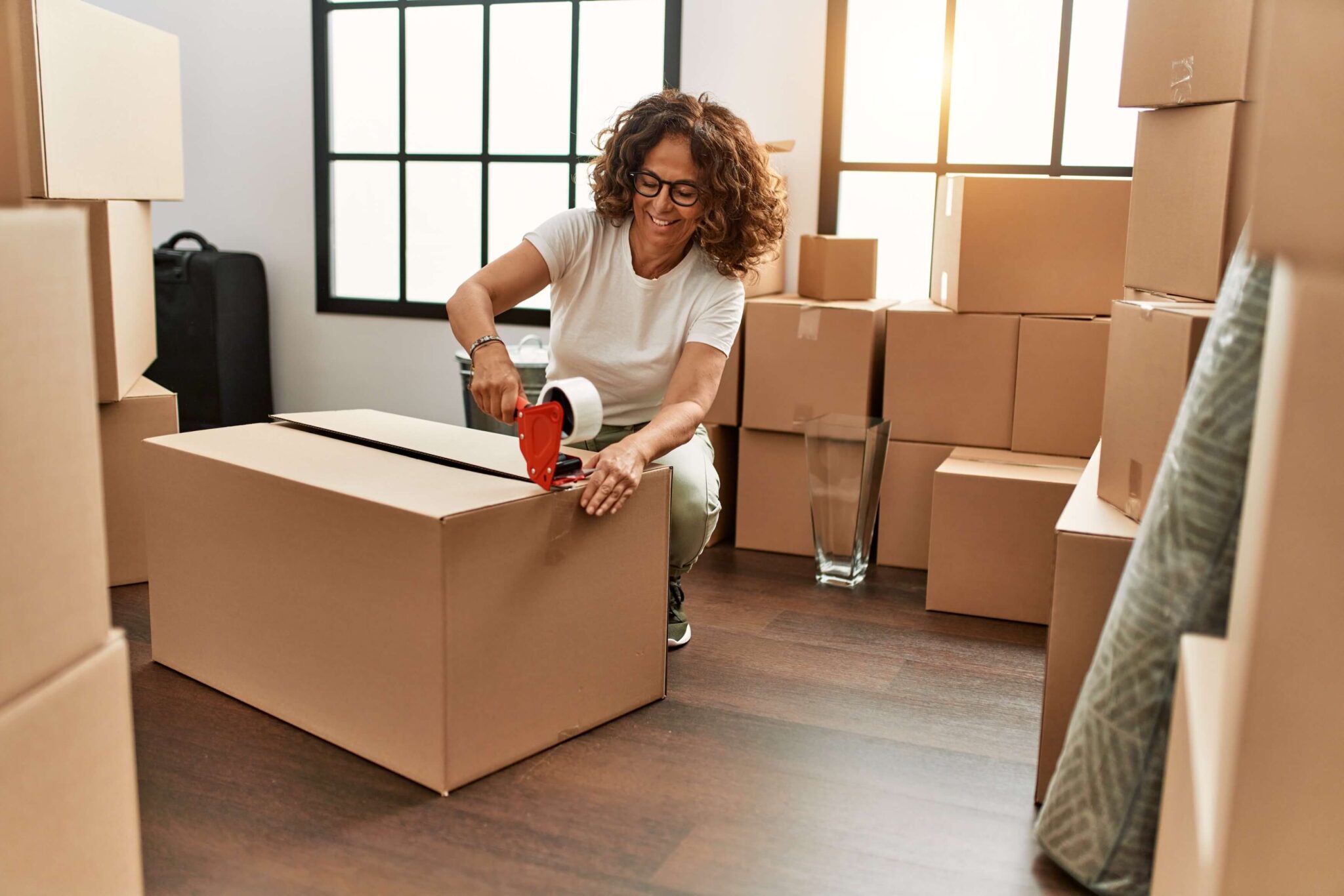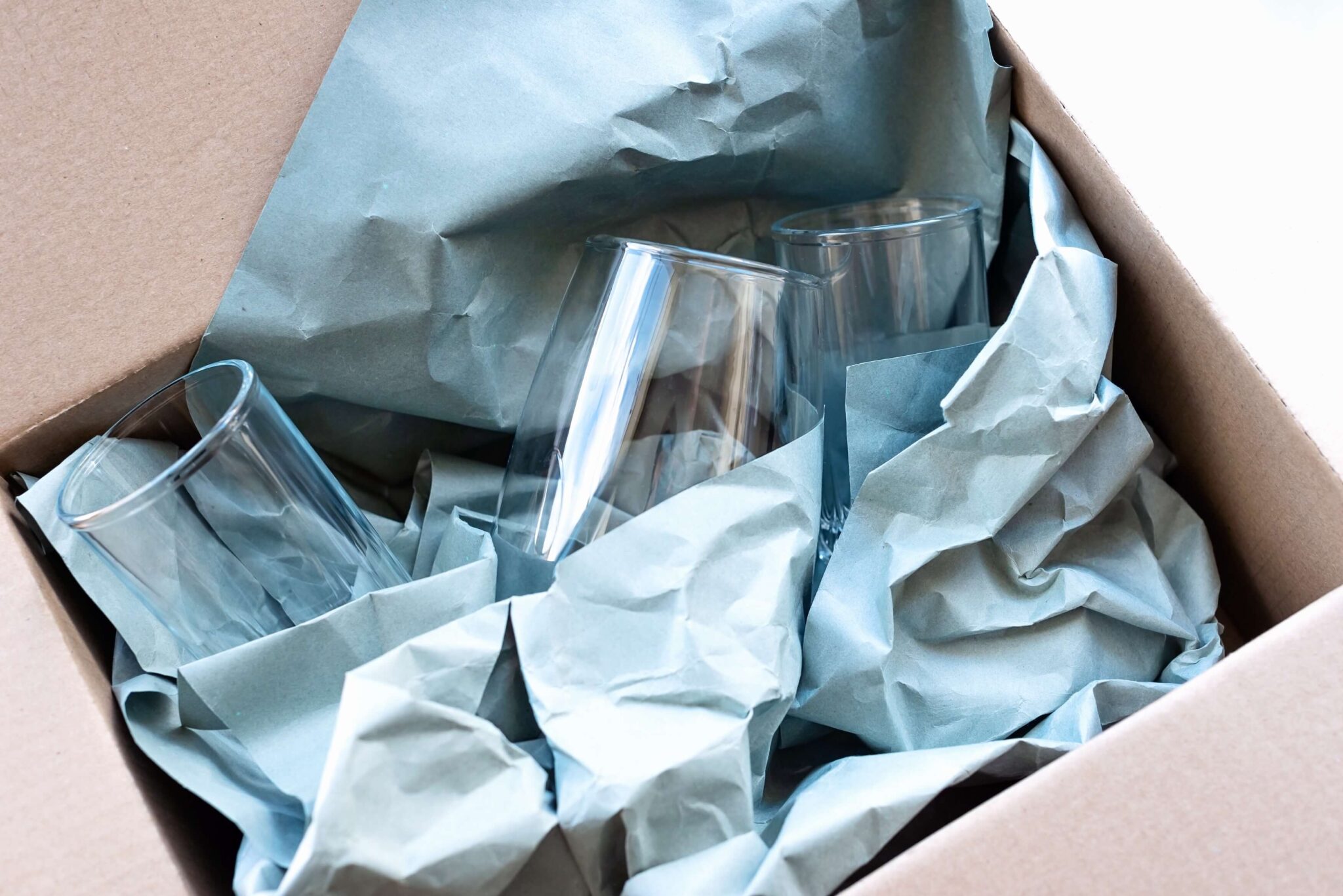Relocating can be a stressful process. There are so many moving parts to think about and control, a schedule to consider, and a new place to get used to. And what can make an already overwhelming situation even harder to handle is your precious glassware breaking.
How to move glassware isn’t an exact science, but we’ve got some tips and tricks that can make the process go a whole lot easier. By following this guide, you can make sure that your glassware - glasses, plates, bowls, and other delicate items - stay safe during your move.
It’s key to make sure that you’re using the right boxes when you’re going through this process, specifically glassware moving boxes (the kind that have separate, square sections for each glassware item). But if you don’t have that type of boxes on hand, just make sure to use more packing material where it’s needed.
Keep reading to learn more about how to pack glassware for moving.
General Tips
There’s so much to do during a relocation, so we recommend taking the process one step at a time. Follow these tips to make sure that you get the best results:
Set up your boxes properly.
This includes taping the bottom of the boxes using wide, strong packing tape - not masking tape or duct tape. If you draw the tape along the bottom of the box and up along the sides, it will add extra strength to make sure the box is secure.
Use white packing paper.
Wrapping glassware for moving can also be done with newspaper, but the glasses will need to be washed when they’re unpacked. White packing paper tends to work better.
Get the family involved.
The more hands on this project, the better. Children as young as seven years old have enough dexterity and understanding of breakables to understand how to pack plates and glasses for moving.
Packing Glassware For Moving
Now that we’ve got the general tips out of the way, let’s get down to business with the best way to wrap glasses for moving.
How to Wrap Glassware
To wrap glassware, start with laying the piece on the stack of packing paper. Using one sheet, insert some of the paper into the open end of the dish (as this will provide more cushion), then fold/tuck both sides of the paper up and over the piece. As you roll it, continue to tuck and fold, and always wrap each piece separately.
You can double wrap thin pieces or crystal glassware by repeating this process. This is also the best way to pack wine glasses for moving.
The goal of this procedure isn’t to make neat bundles. Rather, the goal is to ensure there are enough layers of protection on your dishes. The more layers of crumpled paper, the better.
Packing and Wrapping Drinkware
You can use the same style for wrapping drinkware that you used for glasses, and then place the wrapped bundles on the bed of crumpled paper as you finish each one. Line up each item beside the one before it, and add packing paper to the corners and sides of the box as it’s needed in order to reduce the risk of impact in those places. You can also add another sheet (or two) of packing paper between layers and fit small glassware pieces where you can fit them.
If you hear a clunking sound or notice that items are making contact with each other as you place them in the box, then there’s not enough packing paper being used. Make adjustments until your pieces don’t touch anymore - and again, don’t be afraid of going overboard with the paper!
Wrapping and Packing Plates
Wrapping and packing plates isn’t any more difficult than wrapping drinkware. All you have to do is follow the same process and place paper between each item, then place the plates in small stacks of same-sized plates. To each stack, you can add more paper as you need it.
Make sure to pack larger and heavier plates on the bottom of the box to create a strong foundation. If you have durable and break-resistant plates, you can wrap those with less paper in between each one - but we recommend still placing two layers of paper. (Hint: wrinkled paper or overlapped paper creates better cushioning!)
If you’re working with fragile porcelain, stoneware, or china, don’t be shy with the amount of packing paper that you use. The last thing you want to do is find your precious pieces broken when you open the box.
Filling Up the Boxes
There’s a fine line to toe when you’re packing boxes - not packing enough in each box and packing too much. You can make sure you pack just the right amount by packing your wrapped bundles about three inches from the top. From there, add a crumpled layer of paper. On top of that, you could even put small, non-breakable or non-fragile items like wooden trays or plastic items.
Placing a thick layer of paper on top of your glassware is important because it ensures that when you tape down the flaps of your box, you aren’t pushing down on the glassware itself. And when the box is loaded into a moving truck, it will typically be stacked on top of or under other boxes that could add weight to the flaps and depress the glassware even further. Instead of the weight of other boxes putting pressure on your glassware, let the crumpled paper shoulder the burden.
Making sure your boxes are marked is important, too. This way, you know what area that they’re supposed to be unloaded into and it makes the process a whole lot easier for your family or for movers.
If you expect another move in the near future, you can save yourself the hassle and flatten your packing boxes, then store them in a dry place with laid out and straightened packing paper. These things will come in handy time and time again. If you save them, you’ll reduce your moving costs and the extra work of having to procure them again.
Bayside Removals
Whether you’re moving to Brisbane, from Brisbane, or to or from anywhere in the world, you need a local expert on your side. At Bayside Removals, we are happy to be that expert. We know how stressful moving can be, so we’re here to make life (and your move) much easier. You can trust our team of Brisbane furniture removalists to make sure that your move is completely hassle-free.
